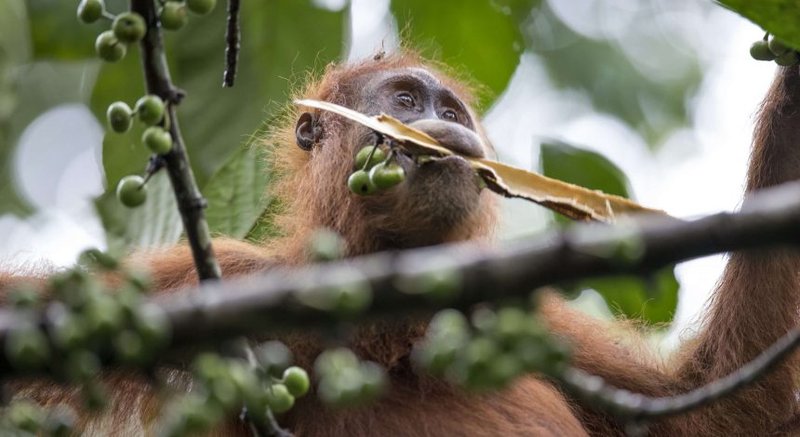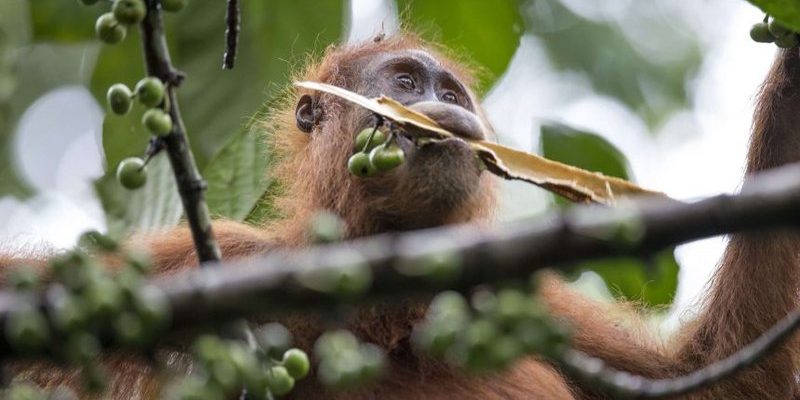
In this article, we’re diving into how orangutans are portrayed in different cultures and folklore. From ancient myths to modern tales, orangutans capture our imagination and, at times, reflect our values and beliefs. So, grab a cup of coffee, and let’s explore the rich tapestry of stories that involve these intriguing primates.
Orangutans in Indigenous Folklore
In the heart of Borneo and Sumatra, where orangutans roam freely, local indigenous communities have woven these animals into their folklore. For many tribes, orangutans are not just animals—they’re seen as *guardians of the forest*. Stories passed down through generations often depict them as wise beings who can communicate with humans, bridging the gap between the animal world and humanity.
One popular tale tells of a young girl who finds a lost orangutan. Instead of fearing it, she befriends the creature, learning its secrets of survival in the jungle. This friendship often symbolizes harmony and respect between humans and nature. *Honestly*, these stories encourage a deep appreciation for the environment, highlighting the importance of conservation long before it became a global concern.
Another fascinating aspect of these narratives is how they reflect human values. For instance, orangutans are often portrayed as cunning or clever. In various stories, their ability to outsmart hunters or navigate tricky situations serves as a reminder of the wisdom that comes from experience. It’s a beautiful illustration of respecting our fellow creatures and recognizing their intelligence.
Orangutans as Symbols of Wisdom and Strength
Across different cultures, orangutans often symbolize wisdom. Their contemplative nature and expressive faces can evoke a sense of deep thought. In some Asian cultures, they are linked to knowledge and understanding, often portrayed as teachers or sages. This can be seen in children’s stories where the orangutan shares lessons about life and nature with young characters, guiding them through challenges.
This portrayal might remind you of the wise old tortoise in classic fables, emphasizing patience and thoughtfulness. Similarly, the orangutan’s ability to solve problems—like using tools to access food—highlights intelligence, making them relatable and admirable in various narratives.
Moreover, in cultures that emphasize strength alongside wisdom, orangutans serve as a reminder that true strength isn’t just about physical power. Their gentle demeanor contrasts sharply with their size, teaching us that strength can also lie in compassion and understanding. This duality is a crucial theme in many folklore traditions, where characters embody both might and gentleness.
Modern Representations in Media
In today’s world, orangutans have found their way into movies, books, and even advertising. They often serve as mascots or characters that embody specific traits—like *playfulness* or *curiosity*. For example, in animated films, orangutans are commonly cast as fun, mischievous characters who bring laughter and lessons to the audience. This modern representation keeps the spirit of traditional folklore alive, but with a twist that appeals to younger generations.
A notable example is the character of King Louie in Disney’s *The Jungle Book*. While it brings a fun, musical vibe to the story, it also sheds light on the orangutan’s natural charm and social nature. However, it’s essential to recognize that such portrayals can sometimes overshadow the real-life challenges faced by orangutans in the wild.
*Here’s the thing:* as engaging as these representations are, they also serve an important purpose. They raise awareness about orangutan conservation and the threats posed by deforestation and poaching. When people connect emotionally with these characters, it can spark interest in protecting their real-life counterparts.
The Role of Orangutans in Conservation Narratives
As awareness of environmental issues grows, orangutans have emerged as symbols in conservation efforts. Campaigns featuring these magnificent primates often highlight the urgent need to protect their habitats. By showcasing their plight, organizations can draw attention to broader ecological issues, making orangutans ambassadors for their forest homes.
For example, documentaries and social media campaigns frequently spotlight the devastating effects of habitat loss due to logging and agriculture. The stories often portray orangutans as innocent victims of human actions, which helps evoke empathy and a call to action. This representation is vital in encouraging people to get involved in conservation efforts and support sustainable practices.
Moreover, some documentaries delve into the intelligence and social behavior of orangutans, stressing their complex emotional lives. By showcasing their ability to express emotions, solve problems, and form bonds, these stories foster a deeper connection between viewers and these incredible creatures. It’s a prime example of using storytelling as a tool for advocacy.
Folklore and the Power of Storytelling
The stories we tell shape our understanding of the world. When it comes to orangutans, folklore serves as a powerful medium to convey values, beliefs, and the importance of coexistence. Each tale—whether it’s from indigenous communities or modern media—carries layers of meaning that resonate with audiences across cultures.
Folklore also plays a crucial role in preserving the cultural heritage of communities that share these stories. As oral histories are passed down from generation to generation, they keep alive the ancient wisdom that reflects the relationship between humans and nature.
It’s essential to realize that these tales are not merely entertainment; they’re a way to connect people with their environment. By emphasizing the role of orangutans in these narratives, storytellers encourage audiences to reflect on their place within the ecosystem.
The Future of Orangutan Representation in Culture
Looking ahead, the representation of orangutans in culture and folklore is likely to evolve. As we face more environmental challenges, stories about orangutans may shift to highlight resilience, adaptability, and the urgent need for conservation.
*You might be wondering how you can be part of this storytelling journey.* Engaging with artwork, literature, or documentaries that feature orangutans can help spread awareness and foster an appreciation for their significance. By sharing these stories in your own circles, you contribute to a growing conversation about conservation and respect for nature.
Ultimately, the tales we tell about orangutans—past, present, and future—will reflect our values and shape our actions. Whether they’re depicted as wise mentors or playful companions, orangutans will always hold a special place in our hearts and stories.
In conclusion, the representation of orangutans in culture and folklore is rich and varied, serving multiple purposes from education to conservation. By exploring these narratives, we not only celebrate these amazing animals but also learn valuable lessons about our connection to the natural world. It’s a journey worth taking, and I hope you feel inspired to further explore these incredible tales!

